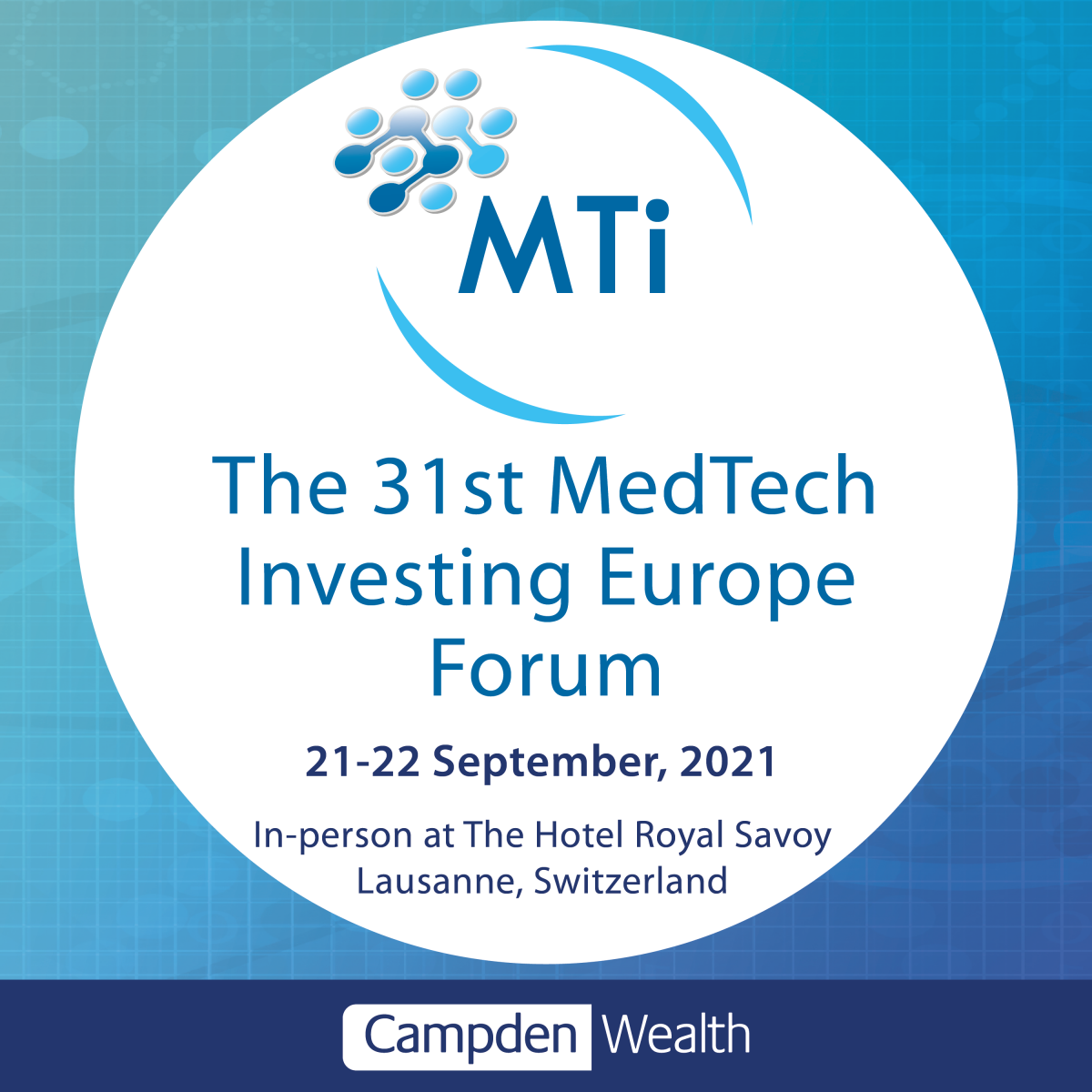What makes a successful MedTech investment?

The medical technology industry is enjoying record levels of M&A activity. Deloitte’s 2020 MedTech review identified a 24% increase in transactions in Western Europe, with strong focus on diagnostics, orthopaedics and data driven innovation.
For many investors the strong growth prospects, resilient valuations and defensive nature of healthcare investments make this a very attractive market. Evaluate MedTech calculates $6 billion of venture financing was invested in 2019 and 2020, slightly down from the 2017 high of $7.8 billion.
 The underlying fundamentals are persuasive. Ageing populations, increased prevalence of lifestyle diseases and focus on prevention rather than cure, all serve to drive demand. Add to this the increasing consumerisation of healthcare, from real time monitoring to personalisation, and it’s clear the industry is a fertile ground for some transformational innovation.
The underlying fundamentals are persuasive. Ageing populations, increased prevalence of lifestyle diseases and focus on prevention rather than cure, all serve to drive demand. Add to this the increasing consumerisation of healthcare, from real time monitoring to personalisation, and it’s clear the industry is a fertile ground for some transformational innovation.
Of course, investing successfully in MedTech is not without its challenges. A great idea does not necessarily equal commercial success. To understand the key factors investors should consider, we spoke with Michel Le Bars, M&A partner (pictured above left) and Gabriele Vanoli (pictured right), consulting partner, at Deloitte Switzerland, ahead of the Campden Wealth 31st MedTech Investing Europe Forum on 21-22 September, 2021.
Michel, as an M&A partner you see a lot of potential investments in the MedTech industry. What are the two or three key factors you believe determine success?
MLB: The most compelling investments we see are where the management team really understands the market and knows exactly what need they are addressing, or even creating in some cases. They have a realistic evaluation of the market potential, supported by third party evidence covering global and regional growth rates for the treatable condition. They also understand how the market is segmented, and what the patient population looks like for the particular therapy.
Some MedTech devices, such as those which facilitate minimally invasive surgery, can open up new market segments as it becomes viable to treat patients at an earlier stage of the progression of their condition. A product which can effectively create its own market will clearly have an advantage.
Gabriele Vanoli (GV): I agree with that Michel. We work a lot with some of the larger MedTech companies, helping them to define which segments of the market they should invest in and how to do it most effectively. The other element around market potential is understanding what drives purchasing decisions now, but more importantly, how that will evolve so the business can develop its value proposition.
 Gabriele, you mentioned how purchasing decisions are evolving. Where do you see the most challenge here for growing companies?
Gabriele, you mentioned how purchasing decisions are evolving. Where do you see the most challenge here for growing companies?
GV: The MedTech market is changing rapidly, and innovation is not just limited to the products themselves. The best performing companies will be those who are already progressing from the current product supplier role and re-defining how they will operate in the future healthcare ecosystem.
We see this particularly in the evolving payment models, with flexible consumption through pay per use and value-added models with providers focusing on patient outcomes becoming more prevalent. This means product-centric solutions will see a steady decline, but this will be offset by increasing focus on service elements such as continuous monitoring, smart diagnostics and prevention.
MLB: This is mirrored in terms of what we see around product innovation. The clearest area of disruption is through data and digitalisation, as always-on biosensors and software are incorporated into devices that can generate, gather, and share data. This elevates the device from a one-off investment to a service, feeding the trends of consumerisation and personalisation, and this will change how MedTech companies operate.

The level of innovation in MedTech is very high, accounting for 7.7% of patent applications in Europe in 2019, a level which has almost doubled in a decade. How can new products differentiate themselves successfully?
MLB: Constant innovation is a primary feature of this industry but to be successful this has to be aligned to the commercial reality. Unless there is a substantial impact on how physicians treat a disease or significant cost advantages through reduced inpatient time, follow up treatment or lower cost to deliver, a product will struggle to make much impact on a crowded market. Cost pressures and increasingly centralised purchasing require quantifiable, significant benefit to gain clinician and purchaser support. Traditional product innovation will struggle to deliver this which is where we see these trends of digitalisation and personalisation coming through again.
So what does this mean for MedTech companies and their investors?
GV: To succeed and thrive in the future, we see three key competencies companies can focus on to define their role, with progressive levels of innovation. The first is to strengthen the core capability, focusing on sustainable cost advantage and cutting-edge product innovation and this will be the most heavily contested.
 The next level of growth will come from expanding the offering, which requires an extension of the existing capabilities. Examples of this would be a “Medical-solution-as-a-service” provider, elevating the product to a holistic solution incorporating workflows, CRM and outcome monitoring.
The next level of growth will come from expanding the offering, which requires an extension of the existing capabilities. Examples of this would be a “Medical-solution-as-a-service” provider, elevating the product to a holistic solution incorporating workflows, CRM and outcome monitoring.
Finally, at the highest level of innovation we see success will come from entering new spaces, particularly around harnessing the potential of ecosystem data.
MLB: That’s true for nearly all the businesses we are currently working with. Their innovation focus is on how to move away from being a product supplier and become embedded in the patient journey. The holy grail of data interoperability will change the way the health conditions are managed, and interconnectivity will put consumers at the centre of managing their health. We think that this is where the most disruptive and successful companies will operate.
 You can read more about Deloitte’s view on the Future of Medtech at Medical Technology Trends Toward Six Roles | Deloitte.
You can read more about Deloitte’s view on the Future of Medtech at Medical Technology Trends Toward Six Roles | Deloitte.
Contact the authors:
Michel Le Bars, Partner, Financial Advisory, Deloitte Switzerland.
mlebars@deloitte.ch +41 58 279 7274
Gabriele Vanoli, Partner, Consulting, Deloitte Switzerland
gvanoli@deloitte.ch +41 58 279 9161






